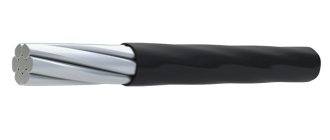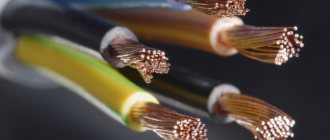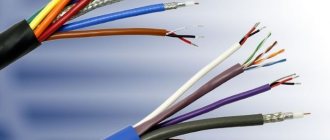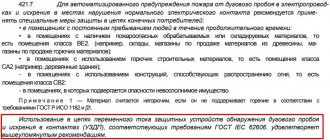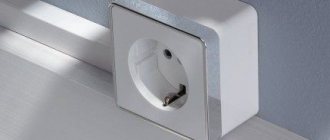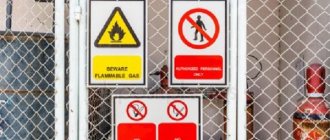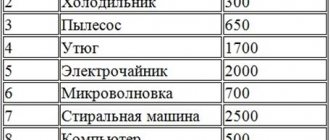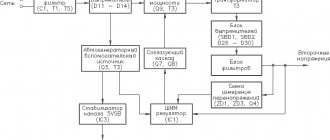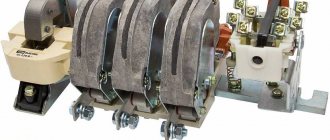What is PPE: decoding and definition. PPE stands for “personal protective equipment.” These are means used by the employee to prevent or reduce exposure to harmful and dangerous production factors, as well as to protect against pollution. They are used in cases where work safety cannot be ensured in any other way (for example, by the design of equipment, organization of production processes, architectural and planning solutions and collective protective equipment). PPE may include special clothing, special footwear, isolation suits, respiratory protection, hand protection, head protection, face protection, hearing protection, eye protection, and various safety devices.
What applies to PPE
In order to avoid controversial issues, labor legislation (more specifically, Article 209) clearly states what applies to personal protective equipment. For example, this category includes gas masks, protective gloves, goggles, belts, and other specialized clothing and shoes. The main criterion is the protective function.
Different human organs can be protected. PPE is classified on this basis. Thus, there are protective products for the eyes, skin, entire head, and respiratory organs. Separately, there are devices against falling from a height (insurance).
There are also filtering and isolating personal protective equipment. The former filter air masses entering the lungs and skin, the latter protect from the effects of electric current, chemicals, high or low temperature, etc.
Do not forget that PPE can also include flushing, neutralizing agents and other liquids. There are complex types of protection: overalls of various configurations and purposes. A complete list of protective equipment at work can be found in GOST 12.4.011-89.
Types of personal protective equipment (PPE)
According to the “Occupational Safety Standards System (OSSS). Protective equipment for workers. General requirements and classification” personal protective equipment, depending on the purpose, is divided into 12 classes:
- insulating suits (pneumatic suits, waterproofing suits, spacesuits);
- respiratory protection equipment (gas masks, respirators, self-rescuers, pneumatic helmets, pneumatic masks, pneumatic jackets);
- special protective clothing (sheep coats, coats, short coats, short fur coats, capes, raincoats, half-coats, dressing gowns, suits, jackets, shirts, trousers, shorts, overalls, bib overalls, vests, dresses, sundresses, blouses, skirts, aprons, shoulder pads);
- foot protection (boots, boots with an extended top, boots with a short top, ankle boots, boots, low shoes, shoes, shoe covers, galoshes, boots, slippers (sandals), high boots, boots, shin guards, over the knee boots, knee pads, foot wraps);
- hand protection (mittens, gloves, semi-gloves, finger pads, palm pads, wrist pads, sleeve pads, elbow pads);
- head protection (hard hats, helmets, balaclavas, caps, berets, hats, caps, headscarves, mosquito nets);
- face protection equipment (face shields);
- eye protection (goggles);
- hearing protection equipment (anti-noise helmets, anti-noise earplugs, anti-noise headphones);
- fall protection equipment and other safety equipment (safety belts, cables, hand grips, manipulators, knee pads, elbow pads, shoulder pads);
- dermatological protective products (protective creams, skin cleansers, reparative agents);
- complex protective equipment.
Personal protective equipment is also classified depending on the influencing factors:
- protection from mechanical damage;
- protection from industrial pollution;
- protection against watery solutions;
- protection against non-toxic dust;
- protection against toxins and other chemical compounds;
- protection from biological factors (viruses, microbes);
- radiation protection;
- protection from electrical influence;
- protection when working in low visibility areas.
What is PPE: decoding and definition
PPE stands for “personal protective equipment.” These are means used by the employee to prevent or reduce exposure to harmful and dangerous production factors, as well as to protect against pollution. They are used in cases where work safety cannot be ensured in any other way (for example, by the design of equipment, organization of production processes, architectural and planning solutions and collective protective equipment).
PPE may include special clothing, special footwear, isolation suits, respiratory protection, hand protection, head protection, face protection, hearing protection, eye protection, and various safety devices.
Requirements for personal protective equipment
Here are the basic requirements for PPE according to GOST 12.4.011-89:
- Protective equipment for workers must ensure the prevention or reduction of hazardous and harmful production factors. The PPE itself should not be a source of hazardous and harmful production factors.
- Protective equipment must meet the requirements of technical aesthetics and ergonomics.
- The choice of a specific type of protective equipment for workers should be made taking into account the safety requirements for a given process or type of work.
- PPE should not change its properties during washing, dry cleaning and disinfection.
- Personal protective equipment must be assessed for protective, physiological, hygienic and performance indicators.
- Requirements for labeling personal protective equipment must comply with GOST 12.4.115 and labeling standards for specific types of personal protective equipment.
- Personal protective equipment must have instructions indicating the purpose and service life of the product, the rules for its operation and storage.
PPE quality control
All PPE received by enterprises is issued to employees after inspection by a commission (the composition is approved by the employer). The main task of the commission is to prevent the use of PPE :
- not corresponding to the application;
- without a certificate of conformity;
- not meeting working conditions;
- not corresponding to the markings for protective properties;
- not meeting the requirements of regulatory and technical documentation (GOST, TU, TO).
PPE is checked as it arrives at the warehouse, but no later than 10 days from the date of receipt. For inspection, the enterprise must be allocated a room with a work table and measuring instruments, normative and technical documentation, catalogs, reference books, etc. Each batch of PPE newly received at the enterprise must be subjected to an external inspection and checked for compliance with the declared range of models, sizes, heights, color, generic sign, purpose. Large batches are subject to random control, but not less than 10% of the total volume. The main feature confirming compliance of PPE with standards is a certificate of conformity and the corresponding sign, marked in accordance with GOST 50460-92. Based on the results of the PPE inspection, a report in the established form is drawn up. In cases of non-compliance, PPE must be returned to the supplier.
How to issue
The Labor Code does not regulate exactly how and within what time frames it is necessary to issue personal protective equipment. The head of the organization or the employee responsible for this has the right to independently decide the form and frequency of issuance. If workers are provided with protective equipment constantly and of adequate quality, then the inspection organizations will not have any complaints.
As for the legislative framework, the process of issuing PPE is regulated by Order of the Ministry of Health and Social Development No. 290n dated June 1, 2009. It says that when issuing, one must be guided by the specific specifics of production processes.
Order of the Ministry of Labor No. 997n dated December 9, 2014 spells out in detail which personal protective equipment lasts for how long. For example, the maximum service life of a helmet together with a balaclava, as well as a protective raincoat, is 2 years.
Rules for providing PPE at enterprises
The main legal act defining the procedure for providing workers with PPE is the Rules for providing workers with special clothing, special shoes and other personal protective equipment
, approved by Decree of the Ministry of Labor and Social Development of Russia dated December 18, 1998 No. 51. The rules provide for the provision of PPE according to Standard Standards, regardless of which sector of the economy the production belongs to, and also regardless of the form of ownership of organizations.
In some cases, in accordance with the characteristics of production, the employer may, in agreement with the state labor safety inspector and the relevant trade union body or other representative body authorized by the employees, replace one type of personal protective equipment provided for by the Standard Industry Standards with another that provides complete protection from dangerous and harmful production conditions. factors: overall can be replaced with a cotton suit or robe and vice versa, suit with overalls with a shirt (blouse) or a sundress with a blouse and vice versa, a can be replaced with a cotton suit with fire-retardant or acid-proof impregnation and vice versa, a suit can be replaced with a cotton suit with fire-retardant impregnation or water-repellent impregnation and vice versa, boots ( low boots ) - with rubber boots and vice versa, boots ( low boots ) - with tarpaulin boots and vice versa, boots - with tarpaulin boots and vice versa, a rubberized apron - with an apron made of polymer materials and vice versa, mittens - with gloves and vice versa , gloves - with gloves made of polymeric materials and vice versa, vachegi - with heat-resistant gloves made of synthetic material and vice versa, plastic oversleeves - with oversleeves made of polymeric materials and vice versa. In cases where such personal protective equipment as vest , a safety belt, dielectric galoshes and gloves , a dielectric rubber mat safety glasses and shields , a respirator , a gas mask, a protective helmet , a helmet, shoulder pads , elbow pads, self-rescuers, antiphons, plugs, noise-proof helmets, light filters, vibration-proof gloves and others are not specified in the Standard Industry Standards, the basis for the issuance of which is the certification of workplaces depending on the nature of the work performed with a wear period - until worn out or as duty workers and can be included in collective agreements and agreements. The employer is obliged to replace or repair PPE that has become unusable before the end of the wear for reasons beyond the employee’s control.
To be filled in by
The company has the right to independently decide which of its employees will be responsible for issuing PPE and filling out the log. It is fundamentally important that this is a competent employee. This obligation may be specified in the employment contract.
Another way to instruct an employee to fill out a journal for the issuance of personal protective equipment is to appoint him responsible for performing this duty by a special order from the manager. In practice, very often such responsible employees are department heads and foremen.
Types of workwear
At the moment, there are a sufficient number of types of workwear. These include not only work suits , but also clothing for service sector workers, uniforms for medical staff, corporate accounting clothing, workwear for pharmacy and pharmacy store workers, robes for judges and clergy. The presence of simply a huge variety of workwear aroused genuine interest in it among modern designers, company managers and directors, who have already “tried it on”, albeit in absentia, to their employees. The purchase of corporate workwear has even become an element of a certain prestige for the company and a way to advance in the thematic market.
Elements of the PPE issuance log
The document is quite simple. Its form consists of two sheets: the cover and the main tabular part. The cover should have:
- Document's name. It is printed in the center of the sheet. Without a number.
- The name of the organization in which it is conducted. If necessary, a structural unit (if there are several journals).
- What date did the magazine start and finish? The second date is usually entered after the fact. Filling out the internal part of the document is possible (and is done) without an end date.
The second sheet of the journal for recording the issuance of personal protective equipment is a sample for filling out subsequent ones. It contains the following fields to fill out:
- Serial number. The document uses continuous numbering.
- Name of protective equipment (gloves, helmet, goggles, suit, etc.).
- Date of issue.
- Service life of a specific product. It can be viewed in the attached documents upon purchase.
- Full name of the recipient of the PPE.
- Signature of the employee who received the item.
- Name and signature of the person who issued the issuance.
- Note. This column most often indicates the basis for issuance. This may be an order from the head of the institution or some provision on extradition. The numbers and dates of these documents are entered in the last column of the journal.
Where is medical PPE used?
Medical special devices are used in emergency cases. Used to protect against poisoning by damaging factors. The list of funds includes:
- dressings;
- disinfectants;
- medicines;
- chemicals;
- medical equipment;
- immunological drugs;
- care items.
Medical PPE is divided into service and spare parts. The first category includes medications, tourniquets, splints, and dressing devices. The second group includes medicinal plants, heating pads, glasses and other products. Basically, these are additional devices that are used in the absence of standard protective equipment.
Rules for filling out the journal for recording the issuance of personal protective equipment
After the pages are printed, they are bound. If the magazine has expired (the specified validity period has passed, usually 1 year), then the total number of pages is written on the last sheet, signed by the head of the organization, and stamped.
Important! Each page of the magazine must be numbered.
Control over the safety of personal protective equipment and their thorough inspection are carried out before their issuance, and subsequently - once every six months. This also needs to be noted in the journal. If possible, then in the “note” column.
Corrections and blots in the document are not welcome, but can be corrected. To do this, false information is crossed out with one line, and the correct information is written on top or on the side (where there is free space). In this case, the signature of the responsible person and the text “Believe the corrected one” are required.
Procedure for using protective clothing for healthcare workers
Now the main functions for the current resolution of the coronavirus situation are assigned to Rospotrebnadzor and the Ministry of Health. Agencies regularly publish explanatory and informational documents regulating the behavior of different groups of the population during a pandemic. They describe how to properly wear a protective suit for coronavirus for medical workers. The fact is that in a difficult epidemiological situation, it is extremely important to use such protective equipment correctly, since violating the order of their use can significantly reduce the expected effect.
The documentation from Rospotrebnadzor indicates that the causative agent of the coronavirus SARSCoV-2 belongs to group II of pathogenicity. This necessitates the use of the following types of protective equipment for various situations that arise during medical activities:
- evacuation of coronavirus patients, performing medical procedures in an infectious diseases hospital, performing regular and final disinfection - type II protective suit, which includes a special overalls or pajamas, an anti-plague robe with a hood or complemented by a large scarf, a cotton-gauze mask, rubber boots and gloves, socks and a towel. Rubber boots can be replaced with tarpaulin boots;
- work in an isolation ward, which involves the possibility of contact with persons who may be infected with coronavirus, performing medical observation of people directly in areas of infection. For this, type IV protective clothing is used, which includes pajamas, medical gown, gauze scarf or cap, socks and shoes or slippers;
- performing autopsies on dead bodies and preparing for subsequent burial – type I protective clothing, the set of which includes a complete list of protective equipment that ensures maximum safety for health workers. In this case, it is especially important to follow the procedure for putting on and taking off a suit during coronavirus for health workers. It includes: overalls or pajamas with a hood (or, in its absence, a large scarf), anti-plague robe, cotton-gauze bandage or dust respirator, goggles, socks, towel, rubber gloves and boots (tarpaulin boots are also allowed).
TYPES OF SAFETY GOGGLES
| Designation | Name | Type of glass | Applicability |
| ABOUT | Open safety glasses | Colorless | Front and side eye protection from particulate matter |
| Light filter | Protection of the eyes from the front and sides from the blinding brightness of light, ultraviolet, infrared radiation and from a combination of radiation of these types with exposure to solid particles | ||
| OO | Open flip safety glasses | Colorless | Front and side eye protection from particulate matter |
| Light filter | Protection of the eyes from the front and sides from the blinding brightness of light, ultraviolet, infrared radiation and from a combination of radiation of these types with exposure to solid particles | ||
| Salary | Closed safety glasses with direct ventilation | Colorless | Eye protection from the front, sides, top and bottom from exposure to particulate matter |
| Light filter | Eye protection from the front, sides, top and bottom from glare, infrared radiation and the combination of these types of radiation with exposure to particulate matter | ||
| ZN | Closed safety glasses with indirect ventilation | Colorless | Eye protection from the front, sides, top and bottom from splashes of non-corrosive liquids and from their combination with exposure to solid particles |
| Light filter | Eye protection from the front, sides, top and bottom from blinding light, ultraviolet, infrared radiation and from a combination of these types of radiation with exposure to solid particles | ||
| G | Closed sealed safety glasses | Colorless, chemical resistant | Eye protection from the front, sides, top and bottom from corrosive gases, vapors, aerosols, liquids and from their combination with dust and exposure to solid particles |
| The filter is chemically resistant | Eye protection from the front, sides, top and bottom from blinding light, ultraviolet, infrared radiation and from a combination of these types of radiation with exposure to corrosive liquids and gases | ||
| N | Snap-on safety glasses | Colorless | Front eye protection from exposure to particulate matter when working with corrective glasses |
| Light filter | Front eye protection from blinding light and from its combination with exposure to particulate matter when working with corrective glasses | ||
| TO | Visor safety glasses | Light filter | Front eye protection from glare and infrared radiation when wearing protective headgear |
| L | Protective lorgnette | Light filter | Front eye protection against glare and infrared radiation during short-term use |
Notes The names of types of safety glasses using their designations established by this standard are established when developing new types of products. When using double glazing (a combination of clear glass and a light filter) in safety glasses, the word “double” is added to the name of the glasses, and the letter “D” is added to the designation.
What to use for coronavirus clothing
Viruses can settle on things, COVID-19 is no exception. Getting into splashes of saliva when the patient coughs, sneezes, or talks, they remain on clothing.
Regular items cover the skin, but cannot completely prevent infection. For these purposes, special protective clothing against coronavirus is used. It is worn by people whose activities involve a risk of contracting COVID-19 during an epidemic (medical workers, scientists, etc.).
According to research, the pathogen lingers on leather, vinyl, polyester, leatherette for up to 2 days, and on cotton and other natural fabrics for about a day. Parts made of plastic and metal extend the lifespan up to a week.
In order to prevent coronavirus infection, it is preferable to adhere to the following principles when choosing clothes:
- things cover the skin and hair as much as possible;
- made from natural fabrics;
- contain a minimum of plastic parts, metal locks, fasteners;
- subject to washing in hot water, intensive rinsing, exposure to chlorine, ironing.
How often should you wash clothes during the coronavirus epidemic?
- as usual, i.e. as pollution occurs - subject to the self-isolation regime;
- after visiting a pharmacy, supermarket, medical facility;
- if there was a meeting with a person infected with COVID-19 or suspected of it;
- daily when working with people, using the metro, public transport.
The water temperature must be at least 60 °C, the washing duration must be at least an hour. After the end of the cycle, you need to apply an additional rinse.
It is advisable to use detergents containing chlorine. You can add a mixture of 9% vinegar and water (1 to 1 ratio) to the rinsing compartment.
Streetwear processing options:
- A solution of 70% alcohol or 9% vinegar. Dampen a piece of cotton cloth and wipe it when returning home.
- Spray things with a spray bottle with the same liquids.
To watch the story from Rospotrebnadzor:
For medical staff
For doctors, anti-plague or disposable anti-epidemic suits are used as protective clothing against coronavirus when working. They completely cover the skin, eyes and hair, which prevents infection.
Ambulance clothing
The same suits are used for ambulance workers as for doctors in outpatient clinics and hospitals. The driver can be dressed like this:
- in protective overalls if his cabin is completely isolated;
- in a complete set when the cabin is not closed from the passenger compartment.
The driver, who is an orderly or paramedic, must wear a protective kit.
How to wear protective clothing correctly:
- Wash the hands;
- wear pajamas, a robe or overalls;
- put on shoes;
- Wash the hands;
- put on a cap, apron, mask, protective screen, gloves.
For ordinary people
When leaving home, you should give preference to thick fabrics. These are tweed, wool, gabardine. Smooth items are easier to disinfect. These include leather, satin, silk.
The uniform should include a cap, Panama hat, scarf or hat, and glasses. To protect the skin of your hands, wear disposable gloves, which are thrown away after visiting a crowded place.
Corduroy, velvet, knitwear, and 100% synthetics are not suitable.
Who created the coronavirus suit
No special suits to protect against coronavirus have been developed. Typically, medical workers use anti-plague equipment that protects against various pathogens. The suits are supplied by Russian manufacturers, less often by China and other countries.
Composition of the protective suit:
- respirator or 4-layer mask – prevents the entry of viruses and germs through the respiratory system;
- protective robe or overalls - covers the skin;
- calico pajamas;
- apron;
- gloves;
- thick shoe covers.
A cap, usually disposable, is put on the head. Depending on the configuration and price, the set may include a mask, a protective screen, and a filter for a respirator.
Costumes are:
- reusable - consist of a mixture of polymer and viscose, which repels moisture; cheaper options are made of thick cotton;
- disposable anti-epidemic ones - are made of polyester, spunbond, some of them are covered with a water-repellent layer.
You can buy a protective suit against coronavirus in specialized stores that sell medical clothing. The price for a one-time copy ranges from 900 to 1,500 rubles, and a reusable copy ranges from 5 to 8 thousand rubles. The most expensive options cost 80–90 thousand.
PROTECTIVE FACE SHIELDS ARE DIVIDED INTO GROUPS AND SUBGROUPS DEPENDING ON THE PURPOSE.
| Group | Subgroup | Type | Execution of the shield body | Sight glass type |
| Particulate Impact Shields | — | Shields with head mount (or helmet mount) | Colorless transparent impact resistant | — |
| Radiation shields | Shields for protection against infrared radiation | Any | Light filtering, opaque or mesh | Light filter or its combination with transparent colorless glass |
| UV Shields | Any | Light filtering or opaque | Light filter or its combination with transparent colorless glass | |
| Shields for protection against glare | Any | Light filtering or opaque | Light filter or its combination with transparent colorless glass | |
| Shields for protection against microwave radio waves | Shields with head mount (or helmet mount) | — | — | |
| Shields for protection against splashes, diluted acids, alkalis, salt solutions | — | Shields with head mount (or helmet mount) | Colorless transparent chemical resistant | — |
| Shields to protect against sparks and splashes of molten metal | — | Any | Light filtering, opaque or mesh | Light filter or its combination with transparent colorless glass |
| Shields to protect against a combination of these factors | — | — | — | — |
| Type of work | Filter designation |
| In heating furnaces, rolling mills and forges | P-1 |
| For steelmaking and other metallurgical furnaces (except blast furnaces) at temperature, °C: | |
| up to 1200 | P-2 |
| from 1200 to 1500 | P-3 |
| 1500 — 1800 | P-4 |
| In steel-smelting furnaces, electroslag remelting furnaces at temperatures from 1600 to 2000 °C | P-5 |
| In blast furnaces, heating furnaces, rolling mills and forges | D-1 |
| At the blast furnaces | D 2 |
| At blast furnaces and glass furnaces | D-3 |
How to properly put on a protective suit
When putting on and taking off a protective kit, it is important for a healthcare worker to strictly follow the established procedure to ensure protection against infection. Separate sections of the letter from Rospotrebnadzor and the recommendations of the Ministry of Health are devoted to these issues. So, putting on a suit for coronavirus includes the following steps:
- First, a suit or pajamas, socks, shoes (boots or galoshes), a hood or a large scarf are put on, and then an anti-plague robe is put on. Then you should tie the existing ribbons on the collar and cuffs of the robe and the belt. If an employee needs a phonendoscope during work, it is put on after their shoes;
- after this, a respirator is put on, ensuring maximum closure of the respiratory organs: the upper part of the mask should be adjacent to the lower eyelid, the lower part should be under the chin. The top pair of ties are tied tightly at the back of the head, the bottom pair is also tied at the crown. After putting on the respirator, cotton swabs are placed on the side of the wings of the nose;
- glasses are worn in such a way as to prevent air from getting inside. They must fit snugly to the headgear and respirator. If, when putting on glasses, places where air can possibly get under them are discovered, cotton swabs are used to eliminate such cavities. The inner surface of the glasses is treated with a special product or dry soap to prevent fogging;
- if it is necessary to perform an autopsy on the patient’s body, the health worker puts on additional protection, including a second pair of gloves, a rubberized or oilcloth apron and oversleeves.
The current instructions on how to put on an anti-plague suit require that the protective suit be put on in a “clean” area, before entering the room where contact with patients infected with coronavirus is expected. It is important to strictly follow the established procedure and ensure that the suit fits comfortably and correctly, ensuring freedom of action for the employee.
If the presence of coronavirus is confirmed during contact with a patient, the health worker must change into a set of protective clothing that meets the new situation. Before putting on additional elements, all exposed surfaces of the body are disinfected. To do this, use a 70% alcohol solution or a 0.5-1% chloramine solution. The same composition (either a 0.05% solution of potassium permanganate or a 1% solution of boric acid) is used to rinse the mouth and throat.
Open mucous membranes, including the eyes, nose and mouth, are treated against coronavirus with a 0.05% solution of potassium permanganate. For eye treatment, it is allowed to use a 1% solution of boric acid and silver nitrate. The mucous surfaces of the nose are treated with 1% protargol. If an employee is allergic to the listed drugs, or they are not available in the medical institution, the mucous membranes should be treated with a stream of ordinary running water.
Procedure for putting on disposable overalls
The procedure for properly putting on overalls designed for one-time use has certain features in comparison with the general algorithm described above. Instructions on how to properly wear a suit during coronavirus infection include the following:
- mandatory hand washing before getting dressed;
- alternately putting on all elements without excessive effort to avoid tears in the material;
- tying all ties and tightening cuffs to prevent uncovered areas of the body and possible contact with coronavirus;
- the need to adjust the position of the respirator after several inhalations and exhalations;
- mandatory wearing of all elements of the costume without exception.
Procedure for putting on reusable overalls
Mandatory rules for putting on an anti-plague suit step by step in pictures can be found on the Rospotrebnadzor website. When putting on overalls designed for reusable use, the following order should be followed:
- the glass of the helmet mask is rubbed from the inside with dry soap to avoid fogging;
- When fastening textile fasteners, it is important to ensure that no holes are left as a result;
- gloves should cover the lower part of the sleeves, and trousers should be tucked into shoe covers to ensure full coverage of the worker’s body and protection from coronavirus;
- all protective and closing elements must be put on and closed completely, in accordance with the instructions, so as to eliminate gaps.
On the Rospotrebnadzor portal there is a video on how to properly put on an anti-plague suit during coronavirus: the procedure for putting on type I suits and type II suits is shown separately.
CONVENTIONAL DESIGNATION OF DIFFERENT GROUPS AND SUBGROUPS OF OPERATING WEAR
| Group (type of protection) | Subgroup (conditions and scope of protection) | Symbol |
| From mechanical impacts | From abrasion | Mi |
| From punctures | MP | |
| cuts From vibration | Mv | |
| From elevated temperatures | From thermal radiation | Tee |
| From open flame | That | |
| From sparks, splashes of molten metal, scale from contact with surfaces heated to 100C | Tr | |
| From contact with surfaces heated from 100 to 400°C. | TP 100 | |
| From contact with objects heated above 400°C | TP 400 | |
| From low temperatures | From low temperatures | TN |
| From contact with cold surfaces | Thp | |
| From dust | From fiberglass dust, asbestos | Ps |
| From fine dust | PM | |
| From coarse dust | PC | |
| From toxic substances | From liquid toxic substances | Yazh |
| From solid toxic substances | Yat | |
| From gaseous toxic substances | Yag | |
| From water and solutions of non-toxic substances | Waterproof | Vn |
| Waterproof | By | |
| From acid solutions | From acids with a concentration above 80% | QC |
| From acids with concentration from 50 to 80% | K80 | |
| From acids with concentrations from 20 to 50% | K50 | |
| From acids with concentrations up to 20% | K20 | |
| From alkalis | From alkali melts | Shchr |
| From alkali solutions with a concentration above 20% | Shch50 | |
| From alkali solutions with concentrations up to 20% | Shch20 | |
| From organic solvents, incl. | From aromatic substances | Oa |
| From non-aromatic substances | He | |
| From chlorinated hydrocarbons | Oh | |
| From petroleum, petroleum products, oils and fats | From crude oil | Not |
| From petroleum oils and heavy fractions | Nm | |
| From vegetable and animal oils and fats | NJ | |
| From solid petroleum products | Nt | |
| From harmful biological factors | From microorganisms | Bm |
| From insects | Bn | |
| From radioactive substances and x-rays | From radioactive contamination | Rz |
| From X-rays | Rn | |
| From electric current, electrostatic charges, electric and electromagnetic fields | From electric current with voltage up to 1,000V | En |
| From electric current with voltage above 1000V | Ev | |
| From electrostatic charge fields | Es | |
| From electric fields | Ep | |
| From electromagnetic fields | Em | |
| Signal | — | WITH |
Procedure for removing the suit
You should take off your protective suit after finishing work that involves the possibility of contact with people infected with coronavirus in a separate room. This is allowed to be done in the room where medical procedures were performed, but only after it has been sanitized. When removing a suit, serious attention must be paid to its disinfection. It is implemented in the following order:
- preparing the necessary equipment, which includes various containers with a disinfectant solution for treating shoes and hands and other purposes, a container with 70% alcohol, a container with a soap solution;
- washing hands with gloves in a disinfectant solution (6% hydrogen peroxide solution, 3% chloramine solution);
- folding the used towel and placing it in a metal tank with a disinfectant solution;
- wiping a rubberized or oilcloth apron with a cotton swab, generously moistened with a disinfectant solution, and folding it from the outside inward;
- removing the second pair of gloves and sleeves;
- wiping shoes from top to bottom using a cotton swab generously moistened with a disinfectant solution. A separate tampon is used for each shoe. Shoes are not removed at this stage;
- removal of the phonendoscope and glasses, which is performed without touching the face. The glasses are removed with a pulling motion, which is directed first from the face, then up, back and behind the head;
- removal of the cotton-gauze bandage, performed without touching the outside of the face;
- untying the belt and ribbons on the robe and then removing it. To untie the ribbons on the cuffs, lower the top edge of the gloves slightly. The removed robe is folded from the outside inward;
- The scarf is removed by collecting all its ends in one hand in the area of the back of the head;
- removing gloves and checking their integrity using a disinfectant solution. Testing gloves for integrity with air is not allowed;
- re-washing the shoes in a tank with a disinfectant solution and removing them.
The entire algorithm for putting on and taking off an anti-plague suit assumes that the health worker who may have come into contact with the coronavirus is wearing gloves. After removing each item of clothing, hands are immersed in a container with a disinfectant solution. After the final removal of all elements, hands are treated with 70% ethyl alcohol, and then washed in warm water and soap.
All removed clothing that is to be reused undergoes disinfection treatment. It is carried out in the form of complete immersion in a tank with a disinfectant solution, placement in a disinfection chamber, autoclaving or boiling. Depending on the disinfection method used, the suits are placed in appropriate containers - tanks, bins, or special bags to perform disinfection in a disinfection chamber.
Procedure for removing disposable protective coveralls
The main feature of removing disposable protective clothing is that after removal, the used coverall must be disposed of. The disposal container should be located in the same room where the employee undresses. The overalls should be removed slowly to prevent accidental contact of uncovered skin and mucous membranes with its outer surface. After removing the overalls, turn them right side inward.
Procedure for removing reusable protective overalls
When using a reusable suit, after removing it, it is immersed in a tank with a disinfectant solution, which is located in the changing area. According to the current procedure, if the algorithm for removing PPE is followed, the outer parts of the overalls must be removed first. Then the hands are treated, and then the process continues. The remaining elements of the protective suit are also placed in disinfectant containers, and a separate container is provided for each element.
Clothes of a COVID-19 patient should be stored separately
The belongings of a coronavirus patient pose a danger to others in terms of infection. What to do with them:
- When treated at home. The patient is cared for wearing a mask and gloves. Clothes are collected in plastic bags and stored separately. It is washed with the addition of chlorine in hot water for the longest possible time, rinsed twice, and air dried if possible.
- In case of hospitalization. Place in plastic bags and tie. Then they are washed, disinfected, and stored in cabinets.
During the coronavirus epidemic, protective clothing helps maintain the health of doctors, ambulance drivers, scientists, relatives of all these people, as well as those who come into contact with patients or carriers of COVID-19 on duty.
Disinfectants for cleaning
Returning from the street, a conscientious person immediately goes to wash his hands, but on the way he in any case touches at least the door handle, light switch, furniture in the hallway, etc. Therefore, in the midst of an epidemic, it would not be superfluous to have special means at home for cleaning these surfaces. Rospotrebnadzor recommends using chlorine or alcohol based products.
A chlorine-containing disinfectant is more effective and has a long-lasting effect that lasts for several hours. This means that during this time the virus will die on the treated surface, even if it is touched again and again. Chlorine-containing products are also useful for washing clothes and textiles. Ready-made solutions are not always affordable, but products in the form of granules or tablets, which must be diluted with water in accordance with the instructions, will help you save money. In undiluted form, such products can be stored and retain their properties for about 6 years. View the entire range of disinfectants
Efficiency
Based on accumulated experience, Western experts in industrial hygiene and occupational diseases believe that in the system of protection against harmful production factors, the use of PPE is the latest and most unreliable method, which should be used only when the use of more reliable methods of protection (changes in technology, automation of harmful production facilities, equipment sealing, effective ventilation, air showers, remote control, etc.) is impossible; or possible - but does not reduce harmful exposure to a safe level.
Law 426-FZ allows reducing the hazard classes of working conditions while providing workers with PPE (and maintaining exposure to harmful factors at the same level - without any improvement in working conditions); and the Social Insurance Fund compensates the employer for the purchase of PPE .
Equipment
Thanks to special disinfecting devices, it is possible to disinfect air, water, hands and all surfaces around. Among them there are household equipment and more powerful ones - for use in medical and industrial premises, offices, and other locations with large crowds of people.
The most popular devices to combat coronavirus are the following:
- automatic sanitizers, dispensers and dispensers - for contactless hand disinfection;
- disinfecting portals - for disinfecting clothes, shoes and all open areas of the human body passing through the frame;
- ozonizers - for disinfection of air and water;
- Plasma disinfection systems - purify the air and surfaces in the room by 99.9%.
Application
PPE is used both for household work and for various production conditions.
In everyday life, such means are used when performing the following work:
- Painting;
- Finishing walls, ceilings;
- Pouring the floor;
- Welding works;
- Cutting metals using an angle grinder;
- Drilling various materials;
- Sanding metal and wood surfaces.
In the production of PPE, they are most actively used in such industries as:
- Fuel;
- Ferrous and non-ferrous metallurgy;
- Metalworking;
- Chemical;
- Food;
- Mechanical engineering;
- Electric power industry;
- Woodworking;
- Pulp and paper;
PPE is also widely used in agriculture and in the provision of public services.
Conclusion
According to scientists, Russia is still facing a new wave of covid-19 cases in the fall of 2022, but they are unable to come to a consensus on when the coronavirus will end. According to the most optimistic forecasts, this will happen only at the beginning of 2022. Therefore, it is so important to think about your protection now in order to prevent infection. Only comprehensive measures using several means of protection against coronavirus described above will be truly effective.
Sources
- https://tkrim.ru/stati2/54-k-sredstvam-individualnoj-zaschity-siz-otnosjatsja
- https://assistentus.ru/forma/zhurnal-ucheta-vydachi-siz/
- https://www.CentrAttek.ru/info/odevat-snimat-zashchitnyj-kostyum-pri-koronaviruse/
- https://otkanyah.ru/primenenie/zashchitnaya-odezhda-ot-koronavirusa
- https://maskiest.ru/top-sredstv-dlya-zashhity-ot-koronavirusa
